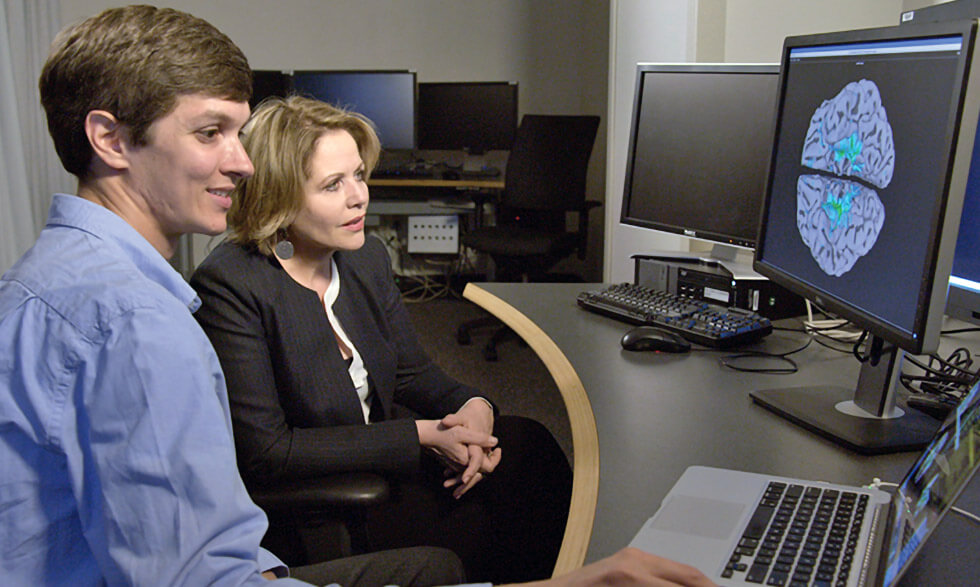Health Topics

How singing affects our brain
Renée Fleming helps NIH researchers better understand link
In 2017, soprano Renée Fleming took part in a remarkable experiment as part of NIH’s Sound Health initiative. She went through a functional magnetic resonance imaging, or fMRI, scan and had her brain imaged—all while singing.
The test was conducted by researcher David Jangraw, Ph.D., a postdoctoral research fellow at the National Institute of Mental Health.
“We’re trying to understand the brain, not just so we can address mental disorders or diseases or injuries, but also so we can understand what happens when a brain’s working right and what happens when it’s performing at a really high level,” Dr. Jangraw says.
Their research found something interesting: Thinking about singing made the brain more active than singing itself.
“I think one of the more interesting things we discovered with Renée is that there were regions of the brain that were more active when Renée was imagining singing than when she was actually singing,” says Jangraw. “And that is something that’s been found in larger group studies, as well.”
As interesting findings like these continue to come in, Dr. Cheever notes that this is a turning point. Dr. Cheever is staff assistant to Dr. Collins for the Sound Health initiative and director of the Muscle Disorders and Therapies Program at the National Institute of Arthritis and Musculoskeletal and Skin Diseases.
“The field of music and health is poised to take the next steps now, and build upon exciting smaller studies and case reports providing a foundation in this area,” Dr. Cheever says. “We are working on initiatives that would support both basic and applied research in this field that are a direct result of the Sound Health initiative.”







